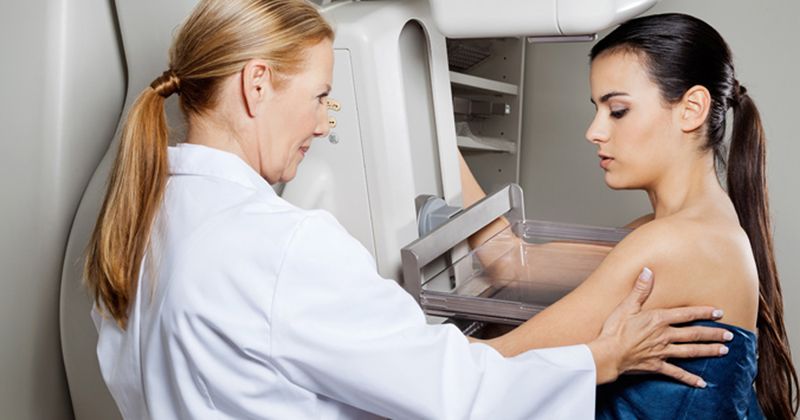Remote intervention encourages cancer screening among rural Midwest women
Key takeaways :
- Both intervention groups had greater odds of obtaining all screenings vs. usual care.
- DVD plus telephone call with a patient navigator was more effective in promoting at least one screening vs. usual care.
A mailed DVD with information about personal cancer risks, particularly when followed by a phone call from a patient navigator, increased adherence to recommended screenings among rural women at modest costs, according to study data.
“This study evaluated the effect of two interventions: a mailed, interactive DVD with messages tailored to each woman’s responses and the DVD followed by telephonic patient navigation,” Victoria L. Champion, PhD, RN, distinguished professor of nursing at the Indiana University School of Nursing and associate director of community outreach and population research at the Indiana University Melvin and Bren Simon Comprehensive Cancer Center, Indianapolis, and colleagues wrote. “Both interventions were tailored to the unique barriers, needs and experiences or rural women by using platforms that could be delivered remotely, thereby reducing access barriers.”

This randomized clinical trial, published in JAMA Network Open, included 963 women aged 50 to 74 years (mean age, 58.6 years) from rural Indiana and Ohio who were not up-to-date on any or all recommended cancer screenings. All participants were randomly assigned to an intervention that included a mailed, tailored DVD that interactively assessed and provided messaging for health beliefs, benefits and self-efficacy for obtaining cancer screenings (n = 382), the DVD plus a patient navigator telephone attempt within 4 weeks to counsel women on barriers to obtaining screenings (n = 388) or usual care (n = 193) between November 2016 and July 2019.
The primary outcome was receipt of any or all needed screenings for breast cancer, cervical cancer and colorectal cancer from baseline to 1 year and cost-effectiveness of the intervention.
Researchers observed an unadjusted 12-month rate of up-to-date status with all cancer screening of 10% for usual care, 15% for the DVD alone and 30% for the DVD intervention plus patient navigation. Rates were slightly higher — 25%, 29% and 49%, respectively —when using up-to-date status for screening for any of the three recommended cancers.
Women who received the DVD intervention alone had almost twice the odds of obtaining all needed cancer screenings compared with women in the usual care group (OR = 1.84; 95% CI, 1.02-3.43; P = .48). Odds were almost six times greater for women who received the DVD intervention plus telephonic patient navigation (OR = 5.69; 95% CI, 3.24-10.5; P < .001).
The DVD plus telephonic patient navigation was more effective in promoting at least one of the recommended cancer screenings at 1 year compared with usual care (OR = 4.01; 95% CI, 2.6-6.28; P < .001).
In the covariate-adjusted model, researchers observed the DVD plus telephonic patient navigation was significantly more effective in promoting an up-to-date cancer screening status for any cancers at 12 months compared with usual care (OR = 4.01; 95% CI, 2.60-6.28; P < .001). Compared with the DVD intervention alone, DVD plus telephonic patient navigation was significantly more effective in promoting up-to-date cancer screening at 12 months (OR = 2.98; 95% CI, 2.09-4.18; P < .001). Also, participants who perceives their finances as inadequate to pay bills were half as likely to be up-to-date with any cancer screenings compared with those who reported having adequate funds (OR = 0.45; 95% CI, 0.24-0.81; P = .01).
Participants working full time (OR = 1.58; 95% CI, 1.07-2.36), who intended to obtain needed screenings in the next 6 months (OR = 1.85; 95% CI, 1.33-2.59; P < .001), with had higher knowledge (OR = 1.20; 95% CI, 1.01-1.42; P = .04) and self-efficacy (OR = 1.07; 95% CI, 1.002-1.14; P = .047) scores and who had lower area deprivation index scores (OR = 0.99; 95% CI, 0.98-0.998; P = .03) had greater odds of being up-to-date for cancer screening vs. participants without.
In addition, both interventions were more cost-effective compared with usual care with $14,462 per woman who was up-to-date for the DVD intervention alone and $10,638 per woman who was up-to-date for the DVD intervention plus telephonic patient navigation.
“Compared with treating cancer, the costs of each intervention to bring women up to date with screening were relatively modest, as on average, cancer treatment costs $150 000 per patient in the U.S., and costs of the intervention would be lower per person at a larger scale. Thus, the additional costs required for the addition of patient navigation to improve screening may result in cost savings by avoiding cancer deaths or treatment at more
advanced stages,” the researchers wrote.
